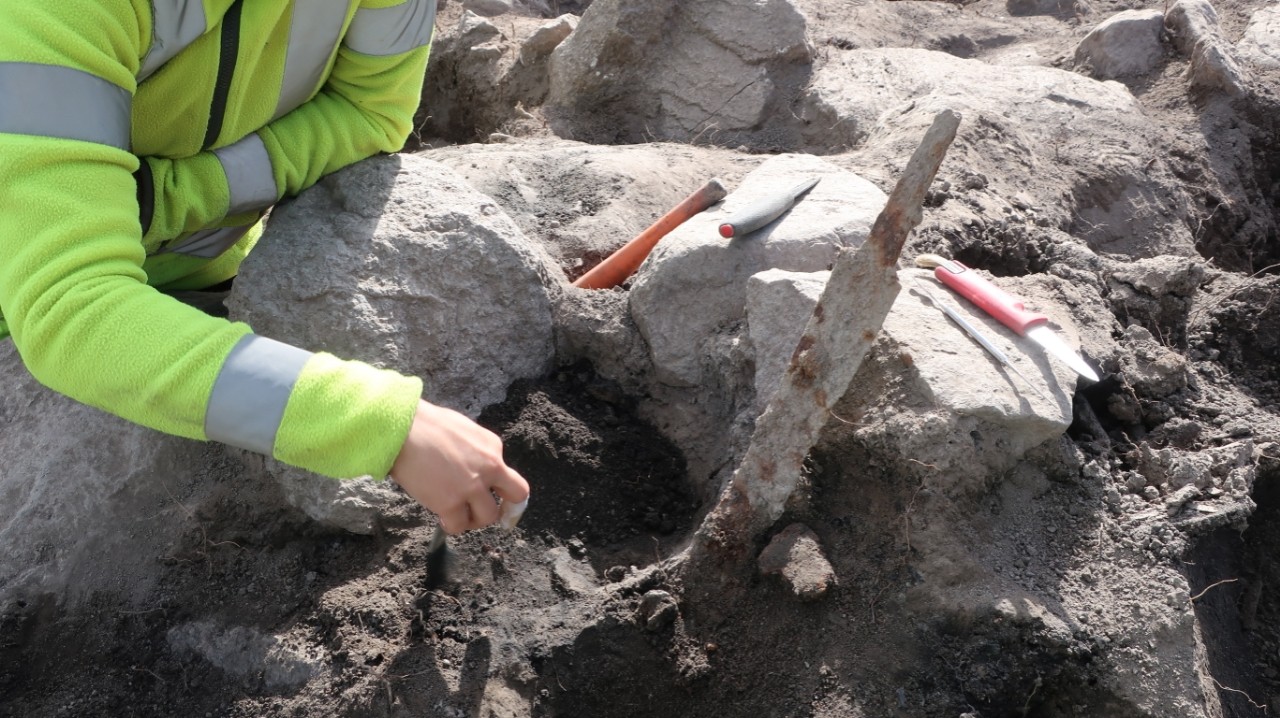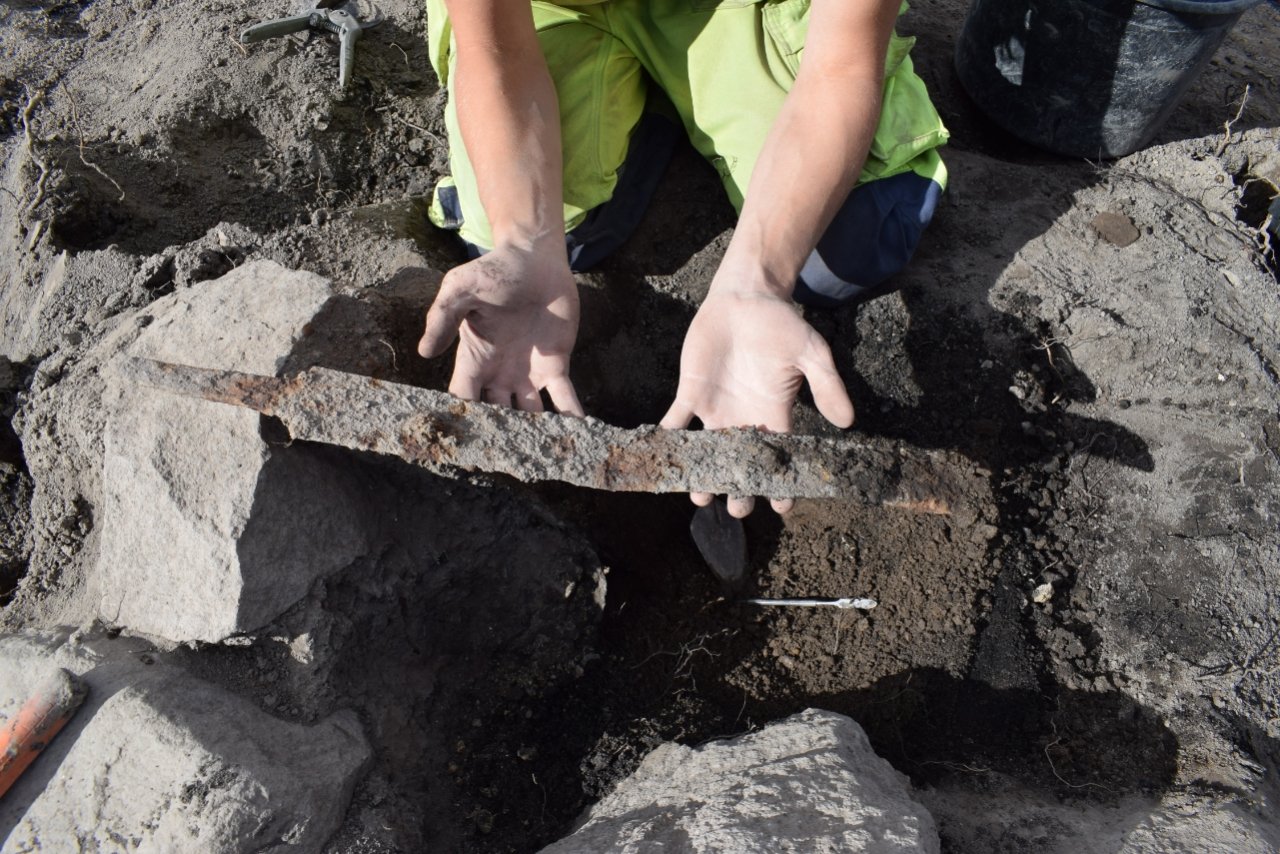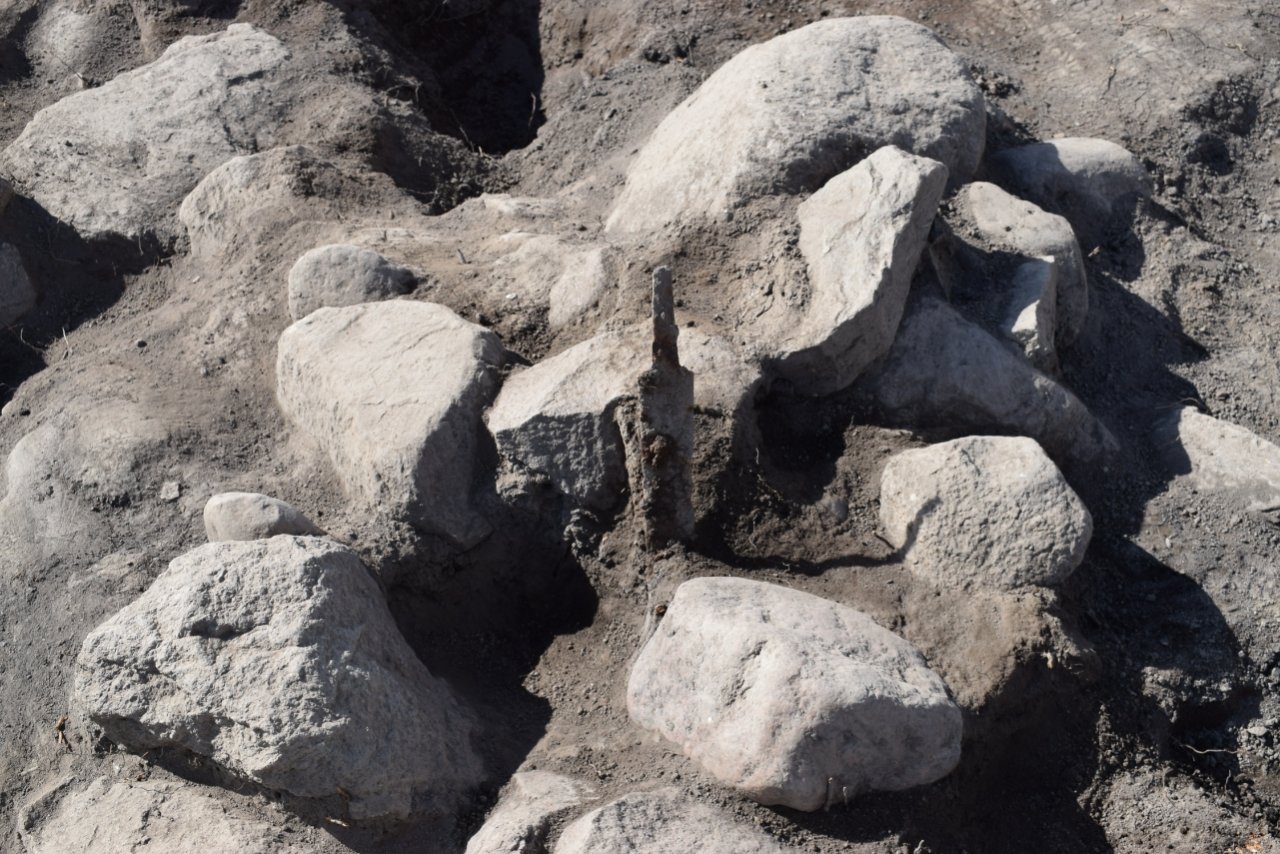The Vikings are known for their expertise in sword-making and their skill in battle. It’s easy to imagine them wielding their weapons in epic battles, but it’s not often that we get a chance to see these weapons up close. In 2022, archaeologists in central Sweden made an incredible discovery – two Viking swords that have been buried for over 1,200 years.

These ancient weapons are a testament to the skill and craftsmanship of the Vikings, and offer a fascinating glimpse into the lives of the people who lived in this region centuries ago. The discovery was made in Viby/Norrtuna outside of Köpin Västmanland, Sweden, in a huge burial field with roughly 100 tombs dating back to the Late Iron Age between 600 and 1,000 AD.
Archaeologist Anton Seiler from Sweden’s State Historical Museums explained why this site was so well-preserved. According to him, in the region, burial sites from the Viking Age are often located on ridges, and therefore they have not been damaged by agricultural work in later centuries.

Previous excavations have revealed that many Viking Age graves in the region contain weapons and horse equipment. Presumably, this uncovers a regional network of armed people, to secure, for example, trade routes and production at the farms.
Only some 20 Viking Age graves with swords from Västmanland are known, despite several hundreds of graves being excavated during the 19th to 21st centuries. This clearly shows that these particular graves with swords from Viby/Norrtuna are very uncommon.
The swords stood straight in the center of the burial chambers. They were constructed of strong iron and were approximately 3 feet long, however, it was difficult to tell their precise length because they both shattered when pressed into the ground. The weapons had also been subjected to more than 1,000 years of deterioration.
The excavation had been ongoing for more than two years to make way for the construction and broadening of a highway between two cities. During the period in question, the dead were cremated, therefore all grave goods found were either burnt or fragmentary. The graves contained, in addition to swords, several kilos of burnt human and animal bones. Although it’s hard to tell without proper osteological analysis, bones from at least horse, dog, and bird (specimens) were found in the graves.
Other discoveries from the site included a game piece of whalebone, pottery vessels, iron rivets and nails, silver posament knots, which would have been worn with clothing, and bear claws. The researchers believe that the objects and other finds can represent different things. For example, they could be the personal belongings of the buried people, items that belong to the funeral rituals, gifts from relatives, and things necessary for the next life.
What remained of the graves’ inhabitants were submitted for scientific analysis to determine their age and gender, and whether several individuals had been buried in the same grave. Though, the swords’ presence indicates that these graves must contain men, in other words, that the owners were male warriors; but we cannot be sure of this.
Female warriors during the Viking Age have been widely discussed in research in recent years, and swords may also have been deposited in children’s graves to show them belonging to a prominent family.

The researchers further stated that the swords may also reflect an investment from the farm as a whole, a symbolic act from the collective of relatives to manifest power structures in the immediate area.
The weapons were sent for conservation immediately after they were excavated. After conservation, when the fragments are pieced together, the researchers will be able to determine the exact length and shape of the swords, including wear and any possible battle damage will also be visible after conservation.
The unearthing of these swords can provide us with valuable insights into the lives of our ancestors from over a thousand years ago. We can learn about the technological advancements of the time, as well as the cultural and social practices of the people who used these swords.
This is a wonderful opportunity for historians and archaeologists to study and learn about the past, and we can’t wait to see what other discoveries will be made in the future.




